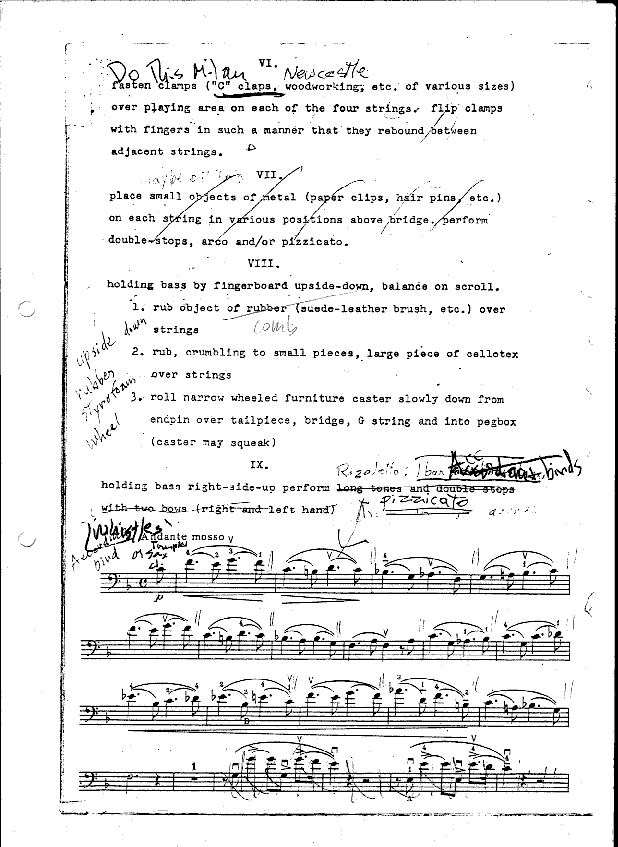VII.
Intro I. II. III. IV. V. VI. VII. VIII. IX. X. XI. XII. XIII. XIV. XV. XVI. XVII. next
In contrast to the work of picking through the notation and assembling objects, which proceeds bit-by-bit at the most pragmatic level possible, when beginning the rehearsal process for a concrete performance I survey the variations as a group and consider which ones to play in which order. Although the letter of the score neither requires nor permits mixing and matching variations to taste, both the performative diary embedded in Patterson’s edits and our direct correspondence have provided more than sufficient encouragement.
This adds an additional layer of complexity to the already considerable work of sorting through what Kotz terms the score’s ‘maximal availability’.1 However, it does provide a way to cope with the tediumof playing each and every variation in the written order. The viewer could sense this — if not the tedium itself, then its potential — in my first performance in 2009, which contains almost every variation in the sequence given by Patterson; the total duration is 30:05. In comparison to my performances in 2014 and 2015, lasting 24:30 and 17:05 respectively, the shape of this first performance comes across as rather arbitrary. Indeed one may have the impression of an undifferentiated list of circus tricks rather than an integral piece. The danger here is not merely boredom or exhaustion, but rather that Variations may come across to the audience as a cheeky 1960s period piece rather than a living, ongoing improvisation.
There is of course more to the selection process than shuffling self-contained modules to embody a dramaturgical vision. As we have seen since the beginning of this exposition, the content of individual variations is extremely malleable and context-dependent. Thus, formal decisions always take place in a feedback loop with ‘lower-level’ physical work.
Things fall off.
Yawn on your lap.
-
In her discussion of event scores, Kotz argues that in ‘[La Monte] Young’s and [George] Brecht’s scores, a condition of “maximal availability” is most effectively created through the most minimal means. The simplest structure could produce the most varied results, while still retaining a certain conceptual unity and structural integrity. An extraordinarily compressed verbal inscription, like “Exit” or “Draw a straight line” provides a kind of structure that other artists could use to produce diverse interpretations or realizations — thereby creating new pieces, and effectively blurring the boundary between “composer” and “interpreter” far more decisively than, for example, musical scores which simply allow performers to select among or re-arrange existing sections. In perhaps the best-known instance of this “re-authoring,” Nam June Paik made an unorthodox realization of Young’s Composition #10 at one of the early Fluxus Festivals by dipping his head in a bowl of ink and using it to draw a straight line on an unrolled sheet of paper in his Zen for Head (1962).’ Kotz 2001, pp. 80-81.
